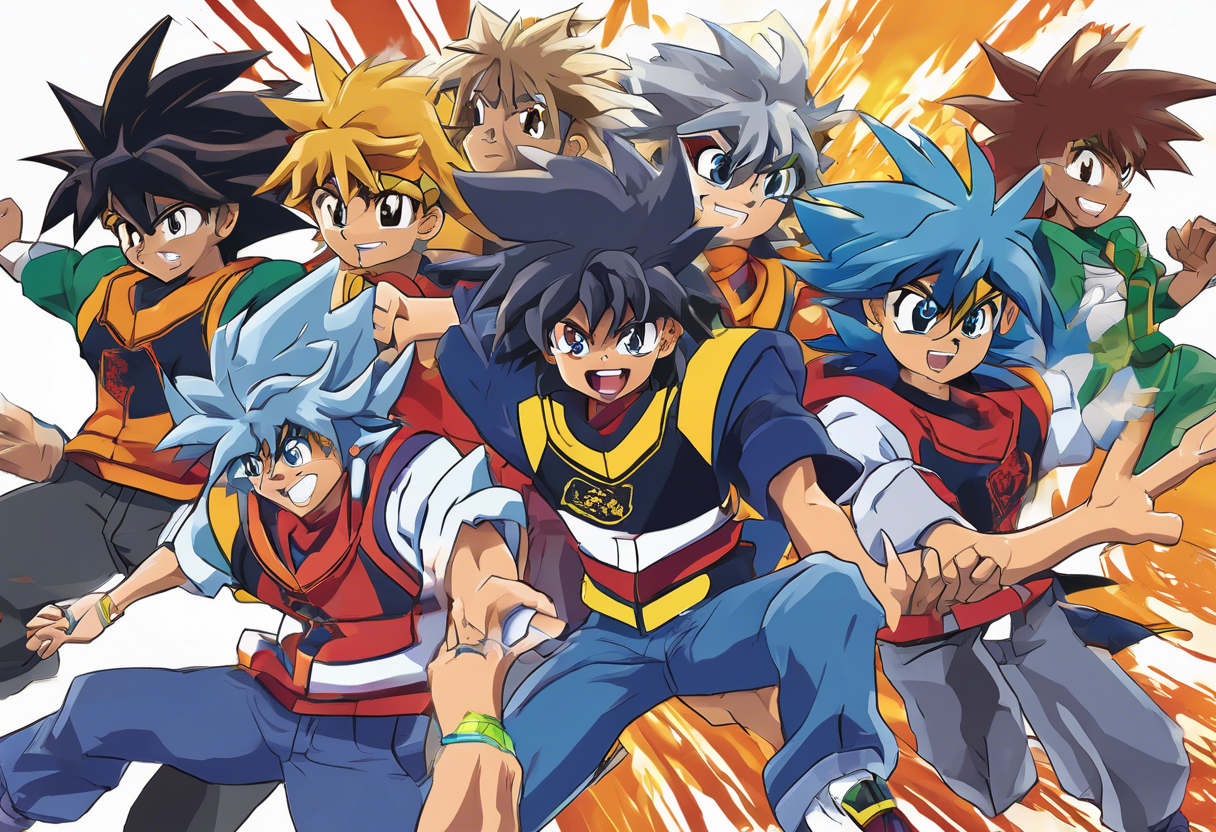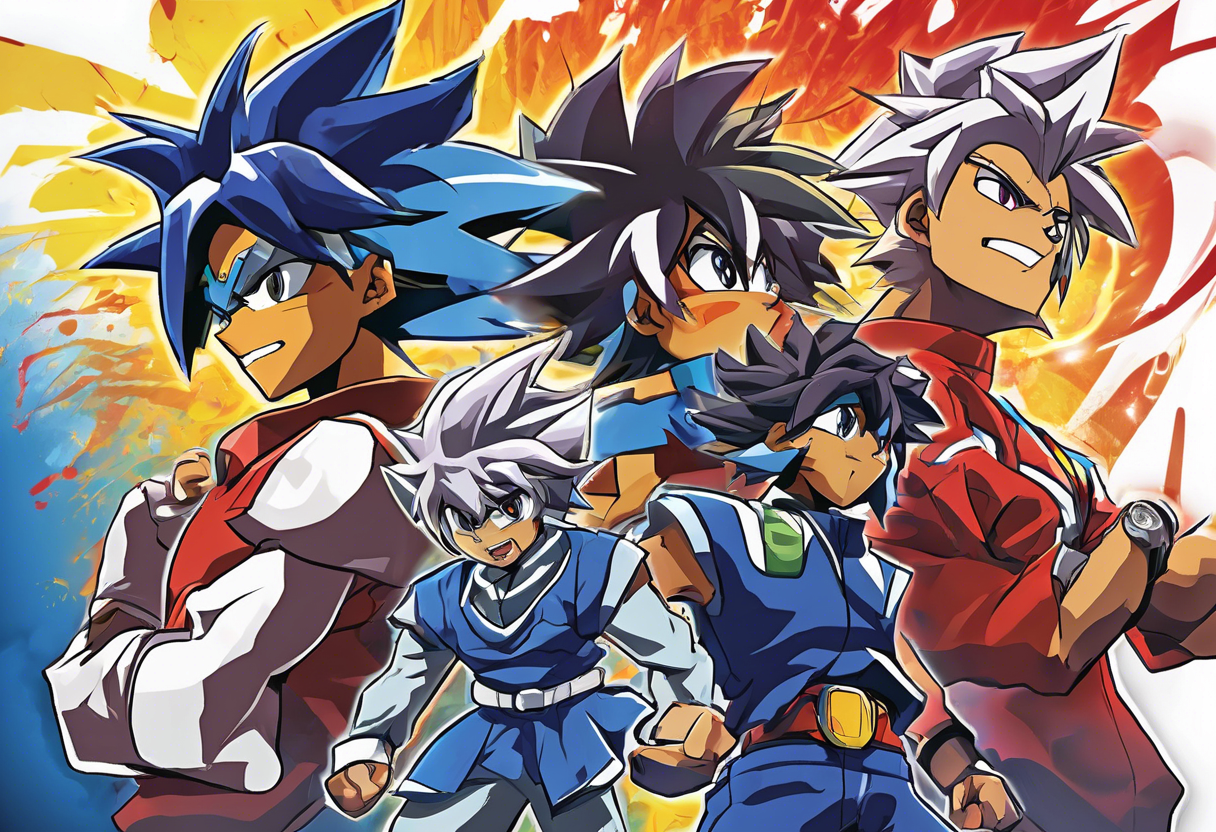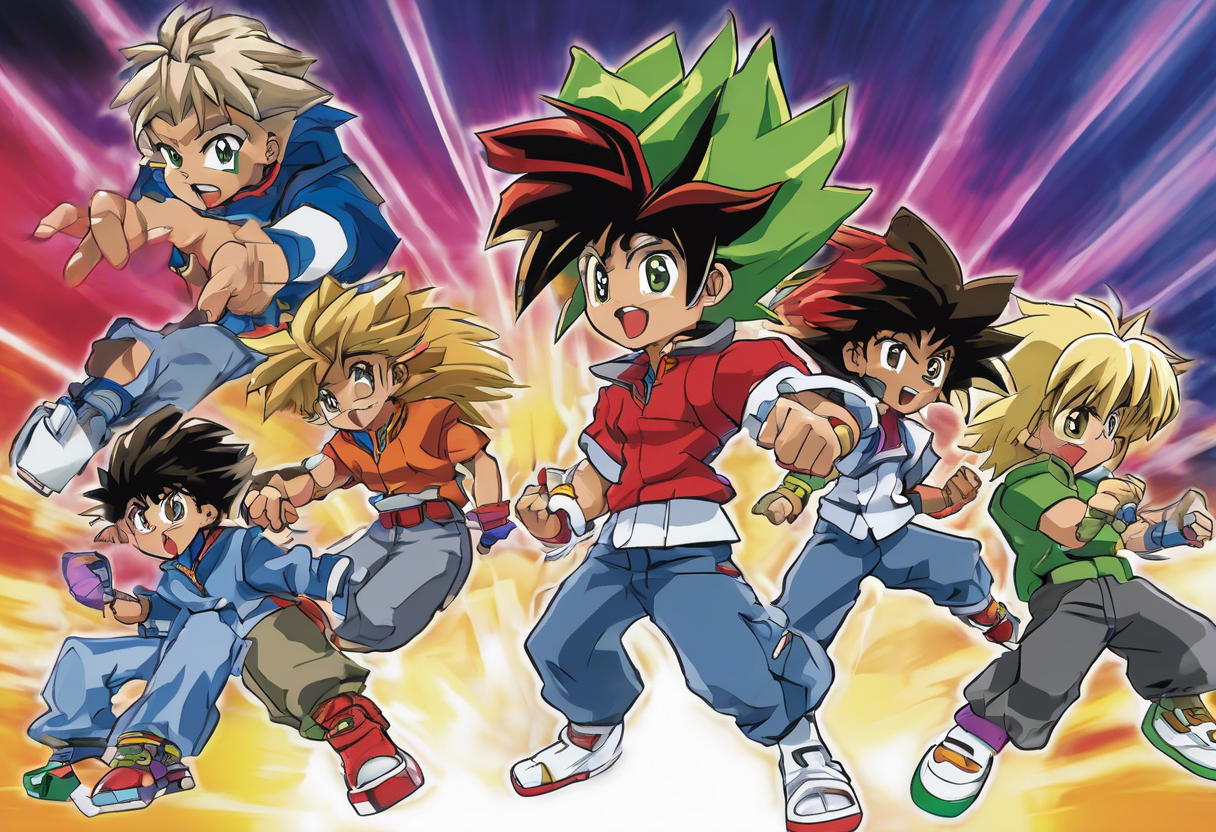Contents
Beyblade (2001) – Episode 47: A Detailed Analysis
Introduction
"Beyblade," the 2001 Japanese anime series, is based on Takao Aoki’s manga of the same name and is centered around the popular Beyblade spinning top game from Takara Tomy. Produced by Madhouse under the direction of Toshifumi Kawase, the series consists of 51 episodes and was first broadcast on TV Tokyo in Japan from January 8 to December 24, 2001. It was later licensed for English adaptation, broadcast, and release by Nelvana, airing on YTV in Canada and ABC Family in the United States in 2002.
Episode 47, while not specifically titled "The Final Battle," is a pivotal episode in the series, marking significant developments in the storyline and character arcs. This episode is part of the broader narrative that sets "Beyblade" apart within its genre through its blend of action, friendship, and competitive spirit.
Plot Summary
In Episode 47 of the original "Beyblade" series, the focus is not on a final battle but rather on the ongoing challenges faced by the main characters. The episode, titled "A Lesson for Tyson" in some adaptations, finds the Bladebreakers stranded in the barren Russian Tundra after a confrontation with the Demolition Boys[4].
The episode begins with Tyson and his friends navigating the harsh environment, reflecting on their past battles and the lessons they have learned. The Majestics, a mysterious and skilled group of Bladers, appear, and Tyson is eager to battle them to prove his skills. However, the Majestics’ true intentions are unclear, adding a layer of intrigue to the story.
As the Bladebreakers face off against the Majestics, the battles are intense and reveal the growth and strategies of the characters. Tyson, in particular, is forced to confront his own weaknesses and the importance of teamwork. The Majestics’ leader challenges Tyson to a one-on-one battle, pushing him to his limits and forcing him to rethink his approach to Beyblading.
Throughout the episode, the settings play a crucial role, with the Russian Tundra providing a stark contrast to the usual urban or tournament environments. This change of scenery highlights the versatility of the characters and their ability to adapt to different conditions.
Character development is a key aspect of this episode. Tyson’s frustration and determination are palpable as he faces defeat and learns from his mistakes. His friends, including Kai, Rei, and Max, provide support and advice, reinforcing the bonds of friendship that are central to the series.
The narrative arcs of the characters are also advanced in this episode. Tyson’s journey from a novice Blader to a confident leader is underscored by his willingness to learn and improve. The other characters face their own challenges, whether it is Kai’s introspection about past battles or Rei’s struggles with his Bit-Beast.
The central conflict of the episode revolves around the battles with the Majestics and the personal growth of the characters. The Majestics serve as a catalyst for Tyson and his friends to reflect on their strengths and weaknesses, leading to a deeper understanding of themselves and their roles within the team.
As the episode concludes, the Bladebreakers emerge with a newfound appreciation for the challenges they face and the importance of working together. The final scenes set the stage for future episodes, hinting at new battles and adventures that will test the characters’ skills and resolve.
Themes and Symbolism
"Beyblade" Episode 47 explores several central themes that are integral to the series. One of the most prominent themes is the importance of perseverance and learning from failure. Tyson’s battles with the Majestics serve as a metaphor for the real-life challenges that one must face and overcome. His initial defeats and subsequent victories underscore the value of persistence and the need to adapt and improve.
Friendship is another theme that is deeply embedded in the episode. The support and camaraderie among the Bladebreakers are highlighted as they work together to overcome their adversaries. This theme is symbolic of the bonds that form between individuals who share common goals and values.
The episode also touches on the theme of self-discovery. Tyson’s journey is not just about winning battles but also about understanding his own strengths and weaknesses. This self-awareness is crucial for his growth as a character and as a Blader.
Symbolically, the Russian Tundra represents a harsh and unforgiving environment that the characters must navigate. This setting serves as a backdrop for their personal and collective growth, symbolizing the challenges and obstacles that one must face in life.
Cultural Impact
"Beyblade" Episode 47, as part of the larger series, has had a significant cultural impact. Upon its release, the series captivated audiences worldwide with its unique blend of action, adventure, and competitive spirit. The show’s popularity led to the creation of various merchandise, including the Beyblade toys, which became a global phenomenon.
The series has influenced popular culture, with references in other anime and media. The concept of competitive battling and the emphasis on teamwork and friendship have been echoed in other shows and films.
Critical Reception
At the time of its release, "Beyblade" received mixed reviews from critics but was widely praised by audiences. Critics noted the show’s energetic pacing and engaging characters but sometimes criticized its formulaic structure and predictable plot twists.
Audiences, however, loved the series for its exciting battles, relatable characters, and inspiring themes. Over the years, the series has developed a nostalgic following, with many fans appreciating its contribution to the anime genre.
Legacy
"Beyblade" Episode 47, along with the entire series, has left a lasting legacy in the world of anime and beyond. The show’s influence can be seen in subsequent anime series that have adopted similar themes and competitive elements.
The series continues to inspire new generations of fans, with its message of perseverance, friendship, and self-discovery remaining relevant today. The Beyblade franchise has expanded to include multiple sequels, spin-offs, and adaptations, ensuring its place in cinematic history as a beloved and enduring franchise.







